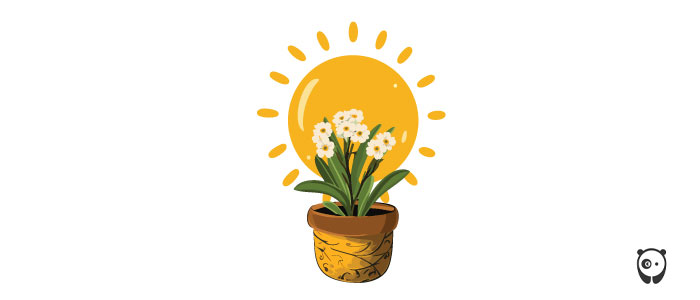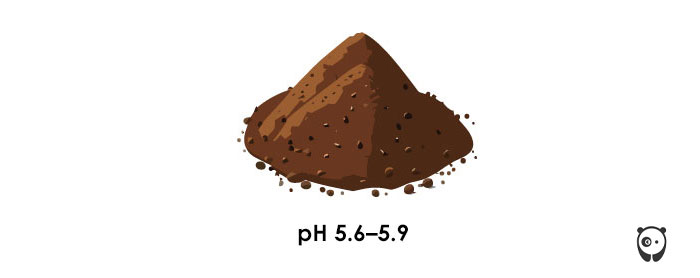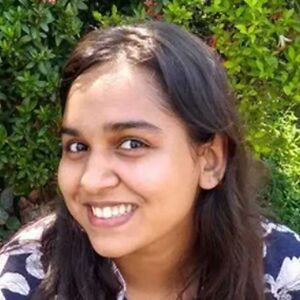
Everything You Need to Know About the Bacopa Plant (Sutera cordata)
The beautiful Chaenostoma cordatum, also known as Sutera cordata or the bacopa plant, is a low-growing trailing perennial. It belongs to a genus called Scrophulariaceae. This South African native plant grows tiny snowflake-shaped flowers that come in pastel hues of white, pink, blue, or lavender. Gardeners love to cultivate it because the plant attracts butterflies.
Image credits: gardening.green87
Bacopa looks gorgeous when grown from a hanging basket because its foliage cascades elegantly. Its tiny heart-shaped green leaves are beautiful and have serrated edges. Since it is a semiaquatic plant, it can also be grown in an aquarium (apart from window boxes) or in your garden.
RELATED: 16 Hanging Plants For A Greener Home
- Scientific Name:Sutera Cordata
- Family:Scrophulariaceae
- Plant Type: Perennial (annual in cooler zones)
- Mature Size: 6-12 inches
- Sun: Full sun to part shade
- Soil Preference: Well-draining potting soil
- Hardiness Zones: 8-11 USDA
Which Plants Are Commonly Confused With Bacopa?
Sutera cordata doesn’t actually belong to the bacopa genus, even though it is called by a similar name. This can be confusing! To help sort things out, here are two common plants people confuse it with.
Bacopa monnieri
The terrestrial Sutera cordata is often confused with the aquatic Bacopa monnieri, part of the Plantaginaceae family. Although they have similar flowers, the two are very different. The bacopa aquarium plant is often used as a medicinal plant. It is known by names like water hyssop, brahmi, and thyme-leafed gratiola. This plant grows in marshy areas in Southern and Eastern India, Australia, Europe, Africa, Asia, and North and South America.
Bacopa caroliniana
Bacopa caroliniana is an aquarium plant that can be used ornamentally. It’s easy to grow and an excellent choice for beginners. The plant has tiny leaves that produce a lemony scent when crushed. It has lovely blue flowers with five petals. You can grow it above or below water, but its flowers will rot when immersed.
Planting and Growing Bacopa
Since it is a versatile plant, you can grow bacopa anywhere. Here’s how to do it.
Where Is the Best Place to Plant Bacopa?
Plant bacopa in a location that will get full or partial sun. It should be protected from heavy winds. If you place it in a potted container, ensure there are a few drainage holes to saturate the soil without causing root rot. Hanging plant pots are the best option for this trailing plant.
When to Grow Bacopa
This plant prefers mild climates. The best time to grow bacopa outside is early or mid-spring after the threat of frost has passed. You can either cultivate it from seeds or cuttings.
Propagation of Sutera cordata
Follow these steps to propagate bacopa easily:
- Take three-inch cuttings from its stem just below the leaves.
- Place them in the soil and cover the plants with a plastic bag to help sustain the humidity needed for germination.
- Keep the container in a warm, sunny spot.
- Roots will form after a few weeks.
- Plant the saplings in the ground at least 10–12 inches apart.
RELATED: How To Grow Plants In A Vertical Hydroponic Tower
How to Care For Bacopa Plants
Bacopa plant care is relatively simple because it grows quickly and doesn’t need much maintenance. Here are a few things you can do to ensure the plant thrives.
Light

The trailing annual needs plenty of sunlight. Although it can survive in afternoon shade or low light, bacopa flowers will only bloom well in full sun. If it’s growing in a very sunny spot, ensure the soil is always moist.
Soil
Sutera cordata needs soil with good drainage. Cultivate the plant in containers with all-purpose potting soil. The optimal soil pH required is 5.6–5.9. If it’s planted in the garden, make sure they are a few inches apart so they don’t stunt each other’s growth.
Water
Regular watering will keep your bacopa happy and healthy. Water the plant liberally and make sure that its soil is always moist. It will lose buds if it isn’t watered enough. An easy way to help conserve the bacopa’s water is to place a layer of organic matter or mulch on top of the soil.
RELATED: This Flower Pot Will Tell You When It Needs Water
Temperature and Humidity
Bacopa won’t be able to flower in extreme heat or freezing temperatures. The right temperature for the plant is a mild 68–100 F. Care for bacopa by monitoring the temperature and humidity indoors or outdoors. You can use a humidifier to recreate its ideal growing conditions if planted inside.
Fertilizer
Regular fertilizing will help keep the plant healthy and blooming all season long. Use a water-soluble fertilizer and follow the instructions on the label. If the plant is browning or yellowing, that is a sign that it needs more nutrients. Landscape plants should be fertilized every 2–3 weeks, while container plants need fertilizing every 1–2 weeks.
Repotting the Bacopa
The best time to transplant bacopa is during late winter or early spring. This will provide the ideal temperature for root development before the hot weather sets in. When you’re repotting it, ensure the container is one size bigger so the plants have room to grow.
Pruning
Since the bacopa is a fast-growing plant, it needs to be trimmed regularly; otherwise, it will take over your garden. These plants are considered self-cleaning, meaning you don’t have to deadhead them.
Care for bacopa plants by removing spent flowers. This will help with blooming. Occasionally trim it back by 5–6 inches to improve growth. This will also make it look tidier, increase air circulation, and lead to healthier stems and roots.
RELATED: Awesome Gardening Ideas From People With A Green Thumb
Overwintering
The Sutera cordata will start dying once the first frost comes. When the temperature drops, bring it inside and place it on a window sill where it can still get sunlight. You can also use a grow light that will help the plant stay warm. In gardens, you can cover the bacopa with a layer of straw to protect it from temperature drops.
Bacopa Flower Care
If you’ve noticed that the plant isn’t flowering, it’s likely not getting enough water. Flowers and buds will drop the moment the soil gets too dry. They will bloom again 2–3 weeks after being properly watered. Remove wilted flowers to encourage new growth and blooming.
Bacopa Varieties
Here are a few commonly known cultivars of Sutera cordata that you can grow in your yard or aquarium.
“Giant Snowflake” Bacopa
This beautiful plant produces gorgeous five-lobed white flowers with heart-shaped leaves. It can grow up to 4–8 inches tall. Its typical growing zones are USDA 9–11. You can cultivate this versatile plant anywhere, like window boxes, hanging baskets, or garden pots. It is a perfect ground cover that will help beautify your landscape.
RELATED: 40 Of The Most Creative Planter Designs
“Snowstorm Blue” Bacopa
This variety of bacopa produces an abundance of lavender-blue flowers. It can grow up to 4–10 inches tall. Its growing zones are USDA 9–11. When placed in a hanging container, the plant can cascade up to four feet long. It is a low-maintenance plant that can also be used for garden borders.
Common Pests and Problems
Image credits: Bassel_Fathy, kayplantandtealover, pisceenn, theseedcollection
Bacopa rarely falls prey to pests. But sometimes, it can be threatened by aphids, spider mites, whiteflies, or thrips. You can eliminate the pests with insecticide spray, neem oil, or a mixture of soap and water.
Dilute the insecticide spray before using it because it might be too harsh for a young bacopa plant. Follow the package instructions for the best results. The plant can also develop mildew or root rot if overwatered or placed in humid conditions.
Bacopa Companion Plants
Grow and care for your beautiful bacopa and combine it with other lovely plants in your yard. Here are a few options that can add to the splendor of the bacopa.
Purple Fountain Grass
This ornamental grass is aptly named for its arcing spikes of purplish flowers. They spread out of its long, slender, burgundy-colored leaves. It can be cultivated in the same garden bed as the bacopa plant because it grows at a similar rate. They will create a striking visual effect in your yard. Purple fountain grass can also be used to make flower arrangements.
Wax Begonia
This flowering plant is very similar to the bacopa plant. Its flowers are also self-cleaning and don’t need to be deadheaded. Wax begonia can be grown in gardens or cultivated as a houseplant. It has glossy, waxy-looking leaves that are often green, bronze, or maroon. Its flowers are white, pink, or red.
Geraniums
These are colorful flowering plants that bloom all summer until frost. They come in various colors, such as red, pink, orange, or white. Their leaves are lush and green with bronze or purple markings. Some geraniums trail beautifully and can be grown as hanging plants in the house.
Landscaping Tips for the Sutera cordata
- Bacopa spreads fast as a ground cover; grow it along a garden pathway to create lush green edges.
- You can hang it from your porch for the plant to act as a “spiller” with trailing leaves creating a fountain of greenery.
- The bacopa plant looks gorgeous in pastel (or similar) shade pots.
- Pair it with silvery shade plants to bring out the colors of the bacopa flowers.
FAQ
To guarantee your success with growing the stunning bacopa blooms, let’s finalize it with a few common questions people have.
Why Is Your Bacopa Turning Brown?
The Sutera cordata can turn brown due to an iron deficiency. You can remedy this by lowering the pH of the soil by adding elemental sulfur, aluminum sulfate, or sulfuric acid, which you can get from any garden center. A lower soil pH will make more iron available to plant roots.
What Is Bacopa Resistant Against?
The bacopa is rabbit and deer-resistant, which is excellent because you won’t have to worry about them nibbling on the plant. Deer will leave the trailing perennial alone for the most part, but extreme conditions might force them to graze on it.
912views
Share on Facebook
 Dark Mode
Dark Mode 

 No fees, cancel anytime
No fees, cancel anytime 




 Image credits:
Image credits:  Image credits:
Image credits:  Image credits:
Image credits:  Image credits:
Image credits: 





 Image credits:
Image credits:  Image credits:
Image credits:  Image credits:
Image credits: 
 Image credits:
Image credits:  Image credits:
Image credits:  Image credits:
Image credits:  Image credits:
Image credits: 











































5
0